Experiencing foot pain? You’re not alone. This article will guide you through understanding the causes, identifying symptoms, and exploring effective solutions to alleviate your discomfort and improve foot health.
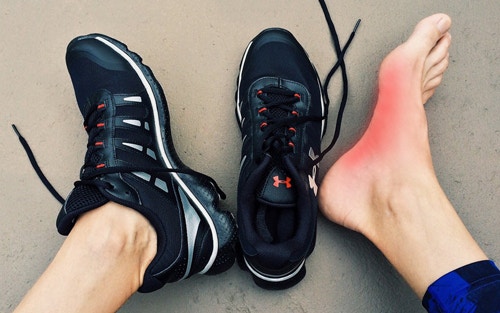
Key Takeaways
- Understanding the complex anatomy of the foot is crucial for diagnosing and treating foot pain.
- Common causes of foot pain include overuse injuries, ill-fitting shoes, and improper foot mechanics.
- Effective management of foot pain involves appropriate footwear, supportive treatments, and timely medical attention when necessary.
Anatomy of the Foot
The human foot is a complex structure composed of 26 bones, including seven tarsals, five metatarsal bones, and 14 phalanges. The heel bone, or calcaneus, is the largest bone in the foot and absorbs the most impact during activities. The tarsals form the back part of the foot, including the talus and calcaneus, crucial for weight-bearing. These bones work in concert to provide support and mobility.
The foot also boasts 33 foot joints, which facilitate both stability and flexibility. These joints allow for a range of movements, from walking and running to jumping and balancing. The foot’s muscles are divided into extrinsic and intrinsic groups. Extrinsic muscles originate in the lower leg and allow various foot movements, while intrinsic muscles are confined to the foot itself and provide fine motor control.
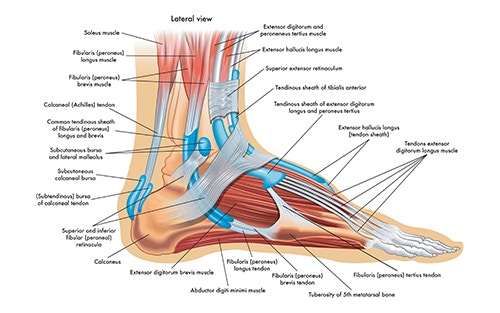
Supporting this intricate framework are over 100 tendons and ligaments, including the plantar fascia, the longest ligament in the foot, essential for arch support. These soft tissues connect bones and aid in movement, ensuring that the foot can withstand the stresses of daily activities, including the achilles tendons. Understanding this anatomy is the first step in diagnosing and treating foot pain effectively.
Common Causes of Foot Pain
Foot pain can stem from a variety of foot pain causes that can cause foot pain, with overuse injuries being among the most common. These injuries often arise from repetitive activities that strain the foot’s structures. Wearing shoes that do not fit properly can lead to various foot ailments and exacerbate discomfort. Shoes with a wide toe box and good arch support can minimize foot pain and prevent issues like plantar fasciitis and metatarsalgia. If your feet hurt, it’s essential to assess your footwear and activity levels.
Improper foot mechanics during movement can cause strain and lead to develop foot pain in different areas of the foot, including stress fractures and a stress fracture. Significant contributors to foot pain include:
- Overuse injuries
- Ill-fitting shoes
- Poor foot mechanics
- Environmental factors, such as walking on hard surfaces
Overuse injury is a common cause of pain on the top of the foot. This type of discomfort can often be linked to physical activity.
Understanding these common causes can help in identifying the root of the problem and taking appropriate measures to alleviate discomfort. Whether it’s through better footwear, supportive inserts, or addressing biomechanical issues, there are ways to manage and reduce foot pain effectively.
Heel Pain: Causes and Treatments
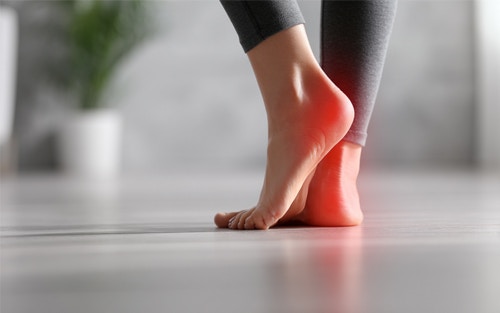
Heel pain is a prevalent issue that can significantly impact one’s mobility and quality of life. Common causes of heel pain include:
- Plantar fasciitis: arises from irritation and inflammation of the plantar fascia, often leading to heel pain that worsens in the morning.
- Heel spurs: a bone growth on the heel bone that can cause pain due to stress and inflammation of the plantar fascia.
- Strain or injury: overuse or sudden stress on the foot’s soft tissues—such as the plantar fascia, Achilles tendon, or surrounding muscles—can lead to inflammation and microtears that produce pain with movement or weight-bearing.
Several factors contribute to the development of plantar fasciitis, including being overweight, having flat feet or high arches, and maintaining occupations that require standing or walking. Treatment options for heel pain include using ice packs to reduce pain and swelling, elevating your feet to alleviate discomfort, and wearing supportive shoe inserts. These measures can help manage symptoms and promote healing.
For those suffering from heel pain, it’s essential to address the underlying causes and adopt appropriate treatments. Whether it’s through lifestyle changes, physical therapy, or medical interventions, there are ways to find relief and improve foot health.
Arch Pain: Identifying and Treating Issues
Arch pain can be particularly debilitating, affecting the ability to walk and stand comfortably. Common conditions causing arch pain include flat feet, fallen arches, and high arches. Individuals with flat feet may experience pain due to a lack of arch support, while those with high arches may experience pressure on specific points of the foot.
Stretching and strengthening exercises can help alleviate discomfort associated with flat feet, called flat feet. Orthotic shoe inserts are commonly used to provide support for arch pain caused by flat feet. These shoe inserts physical therapy offer additional cushioning and support, helping to distribute pressure more evenly across the foot and avoid putting excessive strain.
Addressing arch pain involves understanding the specific condition affecting your feet and taking steps to manage it effectively. With the right combination of exercises and supportive footwear, it’s possible to reduce pain and improve overall foot health.
Pain in the Ball of the Foot
Pain in the ball of the foot, also known as metatarsalgia, can be a significant source of discomfort. Conditions such as Morton’s neuroma can lead to pain in this area, caused by nerve compression and nerve damage. Metatarsalgia is characterized by discomfort and irritation in the ball of the foot, often linked to activities like running and jumping. Symptoms include sharp or aching pain that intensifies with movement and tends to alleviate with rest.
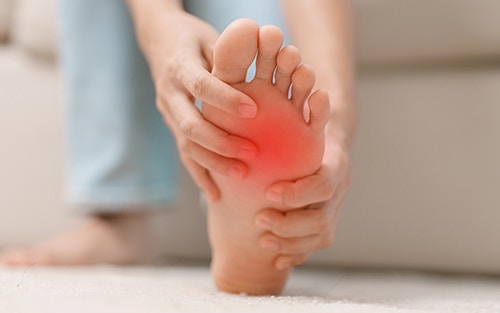
Wearing improper shoes, particularly high heels, can contribute to the development of metatarsalgia. Excess body weight can increase pressure on the metatarsals, exacerbating symptoms. Individuals with high arches or certain toe shapes may be more prone to developing metatarsal bone fractures. Wearing appropriate footwear with cushioning can help prevent or reduce symptoms of metatarsalgia.
Managing pain in the ball of the foot involves addressing the underlying causes and adopting measures to reduce pressure and irritation, including keeping a painful foot elevated. Proper footwear and cushioning can make a significant difference in alleviating pain and improving comfort when you wear Foot Pads.
Toe Pain: Common Conditions and Remedies
Toe pain can arise from various conditions, including bunions, hammertoes, and gout. These conditions can cause significant discomfort and affect mobility. Bunions and hammertoes are often aggravated by improper footwear, while gout is triggered by dietary factors.
Wearing shoes with a wide toe box and using orthotic shoe inserts can help alleviate toe pain. In severe cases, surgical intervention may be necessary for bunions or hammertoes that do not respond to conservative treatments. Addressing toe pain involves understanding the specific condition and taking appropriate steps to manage it.
Choosing the right footwear and following medical advice can reduce toe fractures and enhance overall foot health. Whether you wear shoes through lifestyle changes or medical interventions, there are ways to find relief and enhance comfort for your third and fourth toes, including toe rubs and big toe care.
Ankle Pain and Injuries
Ankle pain can be a result of various injuries, including an ankle sprain, ankle joint fractures, ankle fractures, and overuse injuries. When flat feet are present, the lack of arch can lead to ankle instability and foot and ankle pain during walking. Treatment options for ankle pain may include rest, ice, physical therapy, and ankle sprains, with surgery as a last resort for severe cases.
Seek medical attention if experiencing severe pain, swelling, or inability to walk. Early intervention can help prevent further complications and promote healing. Managing ankle pain involves understanding the cause and adopting appropriate treatment measures.
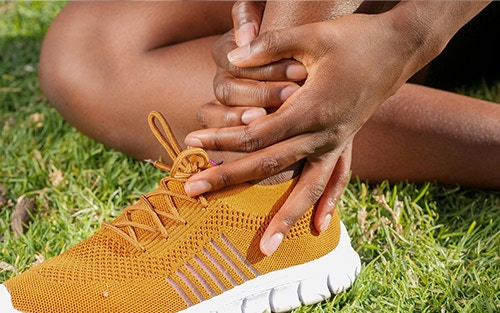
Addressing the underlying issues and adhering to medical advice can reduce ankle pain and improve mobility. Whether through conservative treatments or surgical interventions, miller’s orthopaedic sports medicine offers ways to find relief and enhance foot health.
Diabetes and Foot Health
Diabetes can significantly affect foot health, leading to various complications:
- Diabetes impairs nerves and affects blood flow, which can lead to various foot problems.
- Regular foot examinations are essential for individuals with diabetes to catch issues early.
- A podiatrist can help manage foot health and prevent complications for those with diabetes.
Signs of infection, such as fever or changes in skin color around a foot wound, warrant urgent medical evaluation. A wound on the foot that is not healing properly, especially in individuals with diabetes, requires prompt medical attention. Managing foot health in diabetes involves regular check-ups and prompt treatment of any issues that arise.
Proactive steps and collaboration with healthcare professionals can help individuals with diabetes maintain better foot health and prevent serious complications. Regular monitoring and early intervention are key to managing foot health effectively.
When to Seek Medical Attention
Knowing when to seek medical attention for foot pain is crucial. Immediate medical care is necessary if you experience severe pain or swelling following an injury. Symptoms indicating the need to see a doctor for foot pain include significant injury with trouble bearing weight, bruising or swelling after 2-5 days, and worsening pain. Consult a healthcare provider if you cannot put weight on your foot or if pain persists after several weeks.
Recognizing these signs and seeking timely medical attention can help prevent further complications and promote healing. Understanding when to seek help for severe foot pain is an essential part of managing foot pain effectively.
Self-Care Tips for Foot Pain
Taking care of your feet is essential for preventing and managing foot pain. Key points to consider include:
- Improper fit and lack of support in footwear can contribute significantly to foot pain.
- Wearing well-fitting shoes that have good arch support can help prevent and alleviate foot discomfort.
- Stretching and strengthening exercises can help treat foot pain and improve overall foot health.
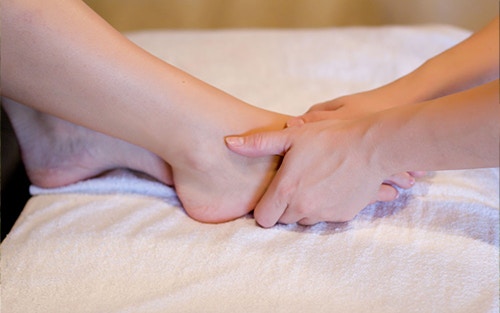
A foot massage can help improve circulation and relieve pain. Incorporating these self-care tips, including hot and cold therapy, can help manage foot pain and maintain better foot health. Regular care and attention can make a significant difference in preventing and reducing foot pain.
Foot Pain Summary
Understanding foot pain is the first step towards effective treatment and management. From the anatomy of the foot to common causes and specific conditions, this guide has provided a comprehensive look at foot pain and its remedies. By addressing the underlying issues and adopting appropriate treatments, it’s possible to find relief and improve foot health.
Taking proactive steps, such as wearing proper footwear and seeking medical attention when needed, can make a significant difference. With the right knowledge and care, it’s possible to manage foot pain and maintain a healthy, active lifestyle.
Foot Pain Frequently Asked Questions
What are common causes of heel pain?
Common causes of heel pain include plantar fasciitis, heel spurs, strains, and injuries. Identifying the underlying cause is essential for effective treatment.
How can I treat arch pain caused by flat feet?
To effectively treat arch pain caused by flat feet, it is advisable to engage in stretching and strengthening exercises while utilizing orthotic shoe inserts for support. These measures can significantly alleviate discomfort and improve foot function.
What should I do if I have pain in the ball of my foot?
To effectively manage pain in the ball of your foot, it is crucial to wear proper cushioning footwear and address any underlying conditions, such as Morton’s neuroma or metatarsalgia.
When should I seek medical attention for foot pain?
You should seek medical attention for foot pain if you encounter severe pain, noticeable swelling, an inability to walk, or if the pain persists for several weeks. Addressing these symptoms promptly can help prevent further complications.
How does diabetes affect foot health?
Diabetes negatively impacts foot health by damaging nerves and reducing blood circulation, increasing the risk of complications. It is crucial for individuals with diabetes to have regular foot examinations and seek prompt treatment for any issues.
(706) 521-5290